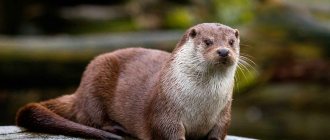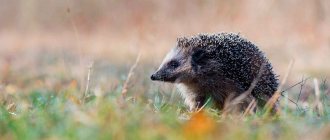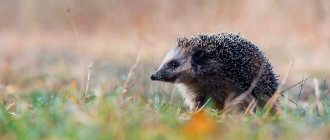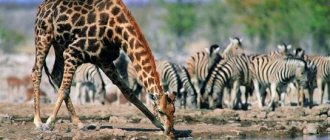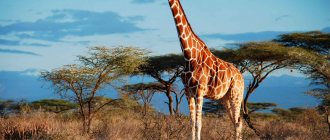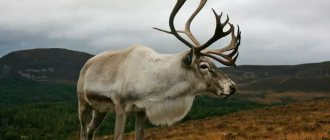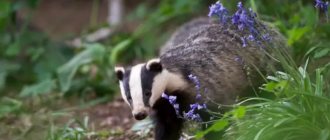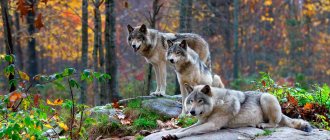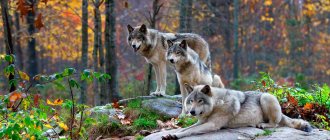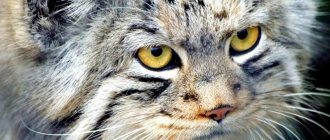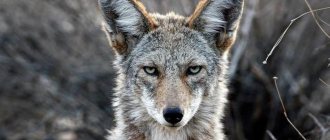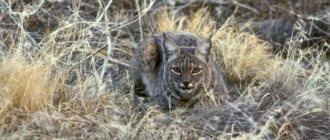- Wild animals
- >>
- Mammals
The otter is a whiskered member of the mustelid family. This is not only a fluffy and pleasant-looking animal, but also a tireless excellent swimmer, diver, intelligent predator, and a real fighter, ready to engage in battle with an ill-wisher. Water is the otter’s element, it is the thunderstorm of fish, crustaceans and mussels. The otter is quite popular on the Internet, this is explained not only by its attractive appearance, but also by its perky, playful disposition.
Origin of the species and description
Photo: Otter
The otter is a predatory mammal from the mustelidae family. In total, there are now 12 different species in the otter genus, although 13 are known. The Japanese species of these interesting animals has completely disappeared from our planet.
There are many varieties, but the most famous of them are:
- river otter (common);
- Brazilian otter (giant);
- sea otter (sea otter);
- Sumatran otter;
- Asian otter (clawless).
The river otter is the most common, we will look into its features later, but we will learn some characteristic features about each of the species presented above. A giant otter has settled in the Amazon River basin and simply loves the tropics. Together with its tail, its dimensions are equal to two meters, and such a predator weighs 20 kg. Its paws are powerful, clawed, and have dark-colored fur. Because of him, the number of otters has greatly decreased.
Sea otters, or sea otters, are also called sea beavers. Sea otters live in Kamchatka, North America, and the Aleutian Islands. They are very large, males weigh up to 35 kg. These animals are very smart and resourceful. They put the food they get in a special pocket located under the front left paw. To feast on shellfish, they crack their shells using stones. The sea otter is also under protection; now its numbers have increased slightly, but hunting it remains strictly prohibited.
Video: Otter
The Sumatran otter is a native of southeast Asia. She lives in mango forests, swampy areas, along the banks of mountain streams. A distinctive feature of this otter is its nose; it is as fluffy as the rest of its body. Otherwise, it looks like an ordinary otter. Its sizes are average. Weight is about 7 kg, length is a little more than one meter.
Interesting fact: Indonesia and Indochina are inhabited by the Asian otter. She loves to hang out in flooded rice fields. What distinguishes it from other types is its compactness. It grows to only 45 cm in length.
The claws on her paws are poorly formed, very small and the membranes are not developed. The characteristic differences between different types of otters depend on the environment where they live. Despite some differences, all otters have a certain similarity in many respects, which we will consider using the example of the common river otter.
Description of the animal
The River Otter (common otter, ash tree) is a mammal that belongs to the mustelidae family. The animal, with a rapidly declining population, lives in many regions of Russia, even in the north, but in small numbers. The animal is quite large in size and is characterized by an elongated, flexible, streamlined body shape.
The individual grows up to 95 cm excluding the tail (up to 55 cm), weighs from 6 to 11 kg. The animal swims and dives well, obtains food in rivers and lakes. An otter can stay under water for no more than two minutes. The average lifespan of an aquatic inhabitant varies from 9 to 11 years. In captivity, healthy individuals live up to 20 years.
| Scientific classification | |
| Domain | Eukaryotes |
| Kingdom | Animals |
| Sub-kingdom | Eumetazoans |
| No rank | Bilaterally symmetrical |
| No rank | Deuterostomes |
| Type | Chordata |
| Subtype | Vertebrates |
| Infratype | Ghostostomes |
| Superclass | Quadrupeds |
| Treasure | Amniotes |
| Class | Mammals |
| Subclass | Animals |
| Treasure | Eutheria |
| Infraclass | Placental |
| Superorder | Laurusasatheria |
| Squad | Predatory |
| Suborder | Caniformes |
| Infrasquad | Arctoidea |
| Superfamily | Musteloidea |
| Family | Musteluns |
| Subfamily | Otters |
| Genus | Otters |
| View | Lutra lutra |
| International scientific name | Lutra lutra |
| Security status | Close to vulnerable |
What does it look like
The otter is a solitary animal and leads a semi-aquatic lifestyle. There are swimming membranes between the toes on the short front legs. The hind legs are slightly longer than the front legs.
This feature allows the animal to easily float on the surface of the water and swim quickly. The otter's tail is long, wide, conical in shape, tapering towards the end. The eyes are small, like beads, located in such a way that she sees everywhere and everything.
The skin is thick with short dense fur. The animal has a dark brown color on the back; closer to the belly, the color of the fur takes on a lighter shade. In winter, the coat is longer than in summer. Spring and summer are molting season.
Interesting! The high density of hair does not allow the animal to get wet while swimming. This protects the body from hypothermia.
Character and lifestyle
The semi-aquatic lifestyle formed the main character traits of the animal. They have excellent eyesight and sense of smell, are attentive and very careful, and will always notice any impending danger. Otters prefer to live separately.
Mobile and active, they choose a suitable territory for themselves and rule it. Animals always look around before leaving the water on land. They try to cover their tracks and the place where they go ashore with branches.
A feature of the otter's character can be called a cheerful disposition and playfulness. In good weather, they are not averse to frolicking in the water, playing with pebbles, and their favorite pastime is sliding downhill. At the same time, they squeal and whistle fervently. Animals have fun not only in winter, but also in summer. On hot sunny days, the animal likes to bask on tree trunks or on coastal rocks.
Animals lead an active lifestyle at night; during the day they usually rest. But if nothing threatens, then they can stay awake during the day. If there is a sufficient amount of food in the selected area for a long time, and there is no threat to life, it will calmly live in place. As soon as problems with food arise, the animal will go in search of a better place.
What does it eat?
The animal's main diet is fish. Her catch consists of pheasants, pike, trout, bullheads or roach. The otter will not refuse to feast on shellfish, bird eggs, and also hunts ducks, rodents, rabbits and lizards.
River inhabitants spend the bulk of their lives in search of food. A good appetite forces them to look for places rich in fish to live. With the onset of winter, when the water surface is covered with an ice crust, obtaining food becomes problematic.
During this period, animals go nomadic in search of food, sometimes covering a distance of up to 20 km per day. They winter near ice-free wormwood.
Where does it live?
The habitat is quite wide. Mammals are found throughout Europe, Asian countries, Japan, and China. The animal is also distributed throughout the regions of Russia, but everywhere in small quantities. In some regions, for example, in the Voronezh region, the otter has been almost completely exterminated.
The animals live mainly near forest rivers rich in fish; they less often settle near lakes or ponds. Individual specimens are found on the sea coast. They make burrows on river banks where there is a lot of windfall. This allows you to arrange a reliable shelter, protect yourself and your offspring from possible enemies. The entrance to the home is located under water.
Reproduction
In mammals, the mating season begins in early spring (March, April). Puberty begins at 2-3 years. Animals breed all year round, especially in favorable climatic conditions.
Males often engage in fights among themselves for the attention of representatives of the opposite sex. One female most often gives birth to 2 to 4 cubs. The female bears the offspring for 63 days, although she is pregnant for 270 days.
Females give birth in dug burrows. After birth, the cubs are very small, blind and toothless, covered with thin down. At the age of one month, their eyes begin to see clearly, and after another month, teeth grow and the color of the skin darkens. From this age, the female begins to teach her offspring to hunt independently. Mature offspring are separated approximately a year after birth.
Natural enemies
River inhabitants have quite a lot of enemies in their habitat. They are especially vulnerable when they are on land. Birds of prey (eagles, hawks), stray dogs, bears, wolves, pumas, and jaguars pose a great danger to them.
The poor ecology of water bodies poses a clear threat to mammals. Many industrial organizations pollute water with garbage, toxins and chemicals. Some fish farmers trap otters to protect their ponds from commercial damage.
Note! Predators mainly attack young and inexperienced animals. An adult otter can give a worthy rebuff to the enemy, especially if she has to protect her offspring.
Appearance and features
Photo: Animal otter
The river otter's body is elongated and has a streamlined shape. The length without a tail varies from half a meter to a meter. The tail itself can be from 25 to 50 cm. Average weight is 6 – 13 kg. This funny cutie otter has a slightly flattened, wide, whiskered muzzle. Ears and eyes are small and round. The otter's paws, like those of a noble swimmer, are powerful, short and have long claws and membranes. The tail is long and cone-shaped. She needs all this for swimming. The predator itself is quite graceful and flexible.
The otter has luxurious fur, which is why it often suffers from hunters. The color of the back is brown, and the belly is much lighter and has a silvery tint. The coat is coarser on top, and underneath there is a soft, densely padded and warm undercoat that does not allow water to reach the otter’s body, always warming it. Otters are neat and coquettes, they constantly take care of the condition of their fur coat, painstakingly cleaning it so that the fur is soft and fluffy, this allows them not to freeze in the cold, because muscular otters have practically no fat in their bodies. They shed in spring and summer.
Females and males of otters are very similar, they are distinguished only by their size. The male is slightly larger than the female. It is impossible to immediately determine with the naked eye who is in front of you - a male or a female? An interesting feature of these animals is the presence of special valves in the ears and nose, which block the entry of water when diving. The otter's vision is excellent, even underwater it can navigate perfectly. In general, these predators feel great both in water and on land.
Interesting Facts
Otters are amazing animals that amaze with their unique features and cause affection with their appearance.
Interesting Facts:
- All representatives of the species see perfectly underwater.
- During a dive, the ears and nasal openings are closed.
- Otters are quite clumsy on land, but over short distances they can reach speeds of up to 35 km/h.
- Sea otters can hold their breath for 3–4 minutes; other species cannot remain underwater for more than two minutes.
- Animals can swim, lie down or sleep on their backs. They float on water thanks to their dense fur and thick undercoat, which does not allow moisture to pass through.
- If the water is cloudy, otters search for prey using sensitive whiskers (vibrissae).
- Otters have webbing between their toes.
- Otters sometimes catch more prey than they can eat at one time. Animals make reserves from “extra” products for the next day.
- Some species lack claws.
- Sea otters are very attached to their baby and simply do not let him out of their clutches. If the cub dies, the female does not part with the body for several days and mourns the loss for a long time.
Animal research continues to this day, since otters are quite secretive animals and are in no hurry to share their secrets.
Where does the otter live?
Photo: River otter
The otter can be found on any continent except Australia. They are semi-aquatic animals, so they prefer to settle near lakes, rivers, and swamps. Reservoirs may be different, but one thing remains unchanged - the purity of the water and its flow. An otter will not live in dirty water. In our country, the otter is widespread, it lives even in the Far North, Chukotka.
The territory occupied by an otter can extend for several kilometers (up to 20). The smallest habitats are usually along rivers and occupy about two kilometers. Larger areas are located near mountain streams. In males they are much longer than in females, and their intersection is often observed.
Interesting fact: The same otter usually has several houses in its territory where it spends time. These predators do not build their own homes. Otters settle in various crevices between stones, under the rhizomes of plants located along the reservoir.
These shelters usually have multiple exits for safety. Also, otters often use dwellings left by beavers, in which they live safely. The otter is very prudent and always has a home in reserve. It will come in handy in case her main shelter ends up in a flood zone.
How do they winter
With the onset of cold weather, otters go out in search of food mainly during daylight hours. For hunting, they choose areas of water bodies that are not covered with ice. If a thin layer of ice has formed on the surface of the water, the animal can break through the wormwood with its teeth. The animal takes the caught fish onto the ice and eats it right near the shore or edge of the ice hole. The remains of carcasses not eaten by the otter help other small predators survive.
Since most river fish go into suspended animation during the winter months, otters have to constantly move along bodies of water in search of food. They are able to cover up to 10-15 km per day.
WOMBAT
What does an otter eat?
Photo: Little Otter
The main source of food for the otter, of course, is fish. These mustachioed predators love mollusks and all kinds of crustaceans. Otters do not disdain bird eggs and small birds; they also hunt small rodents. The otter will happily gobble up even a muskrat and a beaver if she is lucky enough to catch them. The otter can eat waterfowl, usually wounded ones.
An otter spends a huge period of life time trying to get food for itself. She is a restless hunter who can quickly chase prey in the water, covering up to 300 m. Having dived, the otter can do without air for as long as 2 minutes. When the otter is full, it can still continue its hunting, and will simply play and have fun with the caught fish.
In the fishing industry, the activities of otters are highly valued because they consume non-commercial fish, which can eat the eggs and fry of commercial fish. An otter consumes approximately a kilogram of fish per day. It is interesting that she eats small fish right in the water, placing them on her belly, as if on a table, and drags large ones to the shore, where she enjoys her meal.
Since this mustachioed fish lover is very clean, after a snack she spins in the water surface, cleaning her fur from fish remains. When winter comes to an end, an air gap usually forms between the ice and water, and the otter takes advantage of it, successfully moving under the ice and looking for fish for dinner.
It is worth noting that the metabolism of otters is simply enviable. It is so fast that the digestion and assimilation of the food eaten occurs very quickly, this whole process takes only an hour. This is explained by the high energy consumption of the animal, which hunts for a long time and spends a long time in cool (often icy) water, where heat does not stay in the animal’s body for a long time.
Habitat
Waterfowl easily adapt to almost any place, the main condition is the presence of a body of water and fish. They can live in rivers, swampy lowlands, lakes, seashores and even in rice fields. Animals always settle near bodies of water, although they can move and hunt on land. Most species live near fresh water bodies; only two subspecies prefer salt water - the sea otter and the cat otter.
If for some reason life in the old place is impossible, otters migrate over quite impressive distances.
For the construction and arrangement of burrows, animals choose areas where there are many natural shelters and shelters.
Representatives of the species are found throughout European territory, Asia, Russia, South Korea and America.
Features of character and lifestyle
Photo: Otter
The semi-aquatic lifestyle of the otter has largely shaped its life and character. The otter is very attentive and careful. She has amazing hearing, sense of smell and excellent vision. Each species of otter lives differently. The common river otter prefers an isolated lifestyle; such a mustachioed predator likes to live alone, occupying its own territory, which it successfully manages.
These animals are very active and playful, constantly swim, can walk long distances, and also hunt actively. Despite his caution, the otter has a very cheerful disposition, possessing enthusiasm and charisma. In the summer, after swimming, they are not averse to warming up their bones in the sun, catching streams of warm rays. And in winter, they are no stranger to such a common children's pastime as skiing downhill. Otters love to frolic in this way, leaving a long trail on the snow surface.
It remains from their abdomen, which they use as ice. They also ride from steep banks in the summer, loudly splashing into the water after all the fun maneuvers. While riding on such attractions, otters squeal and whistle in a funny way. There is an assumption that they do this not only for fun, but also to clean their fur coat. An abundance of fish, clean and flowing water, impassable secluded places - this is the key to a happy habitat for any otter.
If there is enough food in the otter’s chosen territory, then it can successfully live there for a long time. The animal prefers to move along the same familiar paths. The otter is not strongly tied to a specific location. If food supplies become scarcer, the animal goes on a journey to find a more suitable habitat where there will be no problems with food. In this way, the otter can travel long distances. Even on an ice crust and deep snow, it can travel 18–20 km in a day.
It is necessary to add that otters usually go hunting at night, but not always. If the otter feels completely safe, does not see any threats, then it is active and energetic almost around the clock - such a fluffy and mustachioed, endless source of vitality and energy!
Nutrition
It is not difficult to guess that the main part of the diet of these semi-aquatic creatures is fish. And the quality of food depends on the place where otters live. For example, animals living on the Volga successfully hunt fairly large pikes and carp. But otters, no matter where they live, still prefer fry and other small things to other types of food.
Moreover, such predators are able to catch prey both in reeds among stagnant waters and in rivers with significant currents. Otters living in the northern regions eat cod, brown trout, grayling, and trout.
It is difficult for an animal to become such a creature during periods when the waters are covered with dense ice crusts. Here you have to look for areas of free water, otherwise you won’t be able to catch the fish they love so much. In winter, in search of food, otters have to travel considerable distances, moving on ice and snow. An otter can walk about 20 km in a day.
Those who keep such pets at home should know that they require about 1 kg of food per day. Naturally, they can be given raw fish, as well as meat, eggs, and milk. It is also quite possible to feed otters with mice and frogs. And we should not forget about vitamin supplements.
Social structure and reproduction
Photo: Animal otter
The interaction and communication of various species of otters have their own characteristics and differences. Sea otters, for example, live in groups where both males and females are present. And the Canadian otter prefers to form groups of only male individuals, entire bachelor squads numbering from 10 to 12 animals.
Fun fact: River otters are loners. Females, together with their broods, live in the same territory, but each female tries to allocate her own separate area on it. The male’s domain includes areas of a much larger area, where he lives completely alone until the mating season begins.
Pairs are formed for a short period of mating, then the male returns to his usual free life, taking absolutely no part in communicating with his children. The breeding season usually takes place in spring and early summer. The male judges the female’s readiness for approach by her specific smelling marks left behind. The body of otters is ready for reproduction at two (in females) and three (in males) years of life. To win the lady of their heart, cavalier otters often engage in tireless fights
The female carries the cubs for two months. Up to 4 babies can be born, but usually there are only 2. The otter mother is very caring and raises her babies until they are one year old. Babies are born already in a fur coat, but they see absolutely nothing, they weigh about 100 g. After two weeks they begin to see clearly and their first attempts begin.
Closer to two months, they are already starting swimming training. During this same period, their teeth grow, which means that they begin to eat food that is typical for them. All the same, they are still too small and exposed to various dangers; even at six months they stay close to their mother. A mother teaches her offspring to fish, because their lives depend on it. Only when babies turn one year old do they become fully strengthened and adults, ready to go free swimming.
Animal in the Moscow Zoo
Our otters have been living in the zoo for a long time; they can even be called old-timers. The animals, although very mature (the male Gavril was born in 2007, and the female Ice in 2005), rejoice at visitors like little ones, and even put on a “show” for them - they jump, stand in columns, writhe in the water like loaches. Otters love to “rack up mileage” like swimmers in a pool, swimming on their backs from one edge of the enclosure to the other. The otters' enclosure is spacious and combines three small pools of different shapes and depths with running water. The animals also have the opportunity to hide from the attention of visitors; they can at any time hide in internal shelters through small square holes, curtained with a transparent rubber door, and located at the bottom of the wooden wall of the enclosure.
Our otters have fun in different ways: they can hunt sparrows and ducks flying into the enclosure, or they can swim, catching up with live carp specially released into the pool.
Otters are fed fish, liver, beef heart; their favorite fruit is apples and they love raw carrots. They also receive mineral and vitamin supplements, for which the food is sprinkled with powder consisting of vitamins and minerals.
Natural enemies of the otter
Photo: River otter
Otters lead a rather secretive lifestyle, trying to settle in impassable, secluded places away from human settlements. Still, these animals have plenty of enemies.
Depending on the type of animal and the territory of its settlement, these may be:
- crocodiles;
- jaguars;
- cougars;
- wolves;
- stray dogs;
- large birds of prey;
- the Bears;
- Human.
Usually all these ill-wishers attack young and inexperienced animals. Even a fox can pose a danger to an otter, although it often turns its attention to an otter that is wounded or caught in a trap. The otter is capable of very brave defense, especially when the life of its cubs is at stake. There are cases when she entered into a fight with an alligator and came out of it with success. An angry otter is very strong, brave, dexterous and resourceful.
Still, people pose the greatest danger to otters. And the point here is not only in hunting and the pursuit of luxurious fur, but also in human activity. By massively catching fish and polluting the environment, he thereby exterminates the otter, which is in danger of extinction.
Characteristic
The semi-aquatic lifestyle left a significant imprint on the behavior and habits of the animal.
- As a member of the mustelid family, which includes ferrets , she is a very cunning and virtuoso hunter.
- The main object for hunting is fish, which the animal catches up with at rapid speed.
- On land it moves slightly hunched over, however, this does not affect its running speed.
- An otter can easily run away from a person on the ground.
- For permanent residence, he chooses remote places that are inaccessible to humans. To the detriment of the food supply, she prefers safety for herself and her offspring.
The otter has a cheerful disposition and loves to play, which is especially popular with those who keep the animal at home.
- Likes to hunt in the morning and evening twilight. Does not favor strong winds and snowfalls, lying in a shelter for a long time.
- The animal, like a mongoose , is very secretive and cautious, constantly looking around, and never comes ashore in open areas. Near her home, she covers the exit from the water with spruce branches or chooses places overgrown with bushes.
- The otter has a cheerful disposition and loves to play, which is especially liked by those who keep the animal at home.
Interesting! It is not uncommon to see adult otters and their cubs playfully sliding down the slopes into the water. This is one of the animal’s favorite pastimes.
The hair of the river otter consists of a thick spine, evenly and smoothly adjacent to the body. The spine, lubricated with fatty secretions from the skin glands, prevents the animal’s fur from getting wet. There is much more hair on the belly of an animal than on the back and sides
Population and species status
Photo: Animal otter
It's no secret that the number of otters has declined catastrophically; their population is currently under threat. Although these animals live on almost all continents with the exception of Australia, everywhere the otter is under protected status and is listed in the Red Book. It is known that the Japanese species of these amazing animals completely disappeared from the face of the Earth back in 2012. The main reason for this depressing state of the population is humans. His hunting and economic activities endanger these mustachioed predators. Their valuable skins attract hunters, who have led to the destruction of huge numbers of animals. Poachers are especially fierce in winter.
Poor environmental conditions also affect otters. If water bodies are polluted, it means that fish disappear and the otter lacks food, which leads the animals to death. Many otters get caught in fishing nets and die when they become entangled in them. Recently, fishermen have been viciously exterminating the otter because it eats fish. In many countries, the common otter is now practically unheard of, although it used to be widespread there. These include Belgium, the Netherlands and Switzerland.
Distribution and habitats
The common otter is distributed over a very wide area: it lives on the coasts of seas and freshwater bodies throughout Europe and Asia, and is found in the southern regions of the tundra and in the north of North Africa. In Eurasia, it can be found throughout almost all of Europe, in Asia Minor, some areas of South-West Asia, in the Himalayas, in the very south of India, China, Burma, Thailand, Indochina; The otter lives in northwestern Africa, the British Isles, Sri Lanka, Sakhalin, Japan, Taiwan, Hainan, Sumatra and Java.
Otter: a cute pet
avivas.ru
Otters have a very friendly character and peaceful disposition, which is why they are often kept as pets. A tamed otter is very funny, affectionate and obedient. She quickly gets used to her owner, plays with him with pleasure, is easy to train and quickly becomes everyone's favorite.
If you have the opportunity to regularly walk an otter to a deep pond with clean water, you can try to have such a pet. The disadvantage of keeping it at home is that the animal defecates very often and produces loose stools with an unpleasant odor - this is a consequence of the fish diet.
“Otter” is not a curse, but a compliment!
If you look in dictionaries, you will find that “otter” is a thin, ugly woman. Is that really what an otter is? She's a cute and cute little animal!
And also, a lot of names of rivers and settlements sound like “otter”. For example:
- Otter - a village in Russia
- Vydra - a village in Ukraine
- Otter - a tributary of the Desna
- Otter - tributary of the Kotodji
- Otter - a tributary of the Lebyazhya
- Otter - tributary of the Tura
- Otter - a tributary of the Sozh
“Otter” is the name given to an armored wheeled vehicle of the Airborne Forces; there is even such an architectural term. Here!
Cubs
Otters live alone or in families. Usually this is a mother and her babies. The female gives birth to only 2 - 4 babies, which she feeds and raises herself, without the participation of the male. He only occasionally joins the brood during the hunt.
Otters are born small, about the size of a mouse. They are blind, almost naked, covered with thin fluff. The babies open their eyes by the middle of the second week and grow quickly. The mother otter feeds them milk for 2-3 months.
From six weeks, otter pups try to leave the nesting chamber, can play in the water for hours, and learn to catch crayfish, frogs, and fish. At the age of 8-10 months, otters become independent, but they still need their mother. If trouble happens to her, the brood may die.
pikabu.ru
The mother often brings the prey alive so that the cubs learn independence. Having eaten, the otters play with the remaining food, fight and chase, taking it from each other. After feeding, the mother otter carefully massages the babies' bellies with her tongue so that the digestion process goes as smoothly as possible.
Mother otter is very brave, she can be the first to rush at someone who, as she thinks, is threatening her cubs. Otter cubs stay with their mother for a year or a year and a half.
